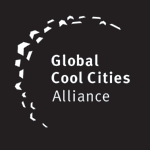There are a number of ways to use roofs to decrease the environmental toll of our built environment, and begin to use urban infrastructure as an agent of adaptation and environmental services. White roofs, cool roofs, green roofs, and photovoltaic installations can all be effective ways to improve the environmental performance of roofs.A cool roof is a roof that uses a highly reflective building material, regardless of the color. Cool roofs can help cool buildings, cities, and the planet by reducing the percentage of sunlight converted to heat by the building surface. White roofs are one type of cool roof. Cool colored roofs are typically treated with a coating that makes them reflective. Because white roofs have a higher reflectivity of any color, they are generally a better choice than cool colored materials. One caveat is that a any colored roof made out of metal or that has a metallic coating, will still absorb a lot of heat (because it will have a high thermal emittance) and is therefore not considered “cool”.
Green roofs are living vegetative systems located on rooftops. Their benefits include cooling the building through shading and insulation, reducing peak storm runoff, and potentially growing food. Green roofs do not, however, provide enhanced reflectivity and thus would have a negligible effect on global temperature if they were widely implemented.
Solar photovoltaic (PV) installations provide neither the reflectivity benefits of a cool roof nor the storm water management benefits of a green roof. However, PV installations can generate clean energy, an important benefit in our global effort to transition to a low-carbon energy economy. Because PV installations typically do not take up the entire surface of the roof, and sometimes require highly reflective roofing to ensure sufficient system efficiency, cool roofs and PV are complementary technologies.
Cool roofs, green roofs and PV are all excellent options for improving the environmental performance of a building. Which system or combination of systems is most appropriate for an individual roof will need to be evaluated on a case by case basis. We strongly believe that each of these options have an important role to play in reducing the environmental impact of our cities and see plenty of room for each solution to thrive.
We do want to point out, though, that cool roofs are by far the cheapest option of the three. They are at least an order of magnitude less expensive on a dollar per square foot basis than both green roofs and PV. When resources are available, we certainly encourage PV and/or vegetative roofs. However, we believe that cool roofs are a solution that can be more readily adopted by a larger percentage of cities globally.

